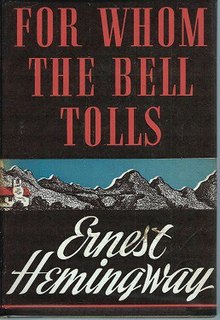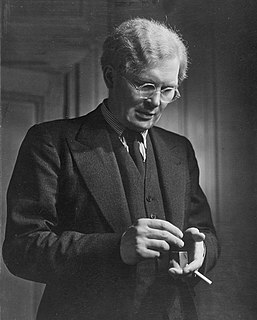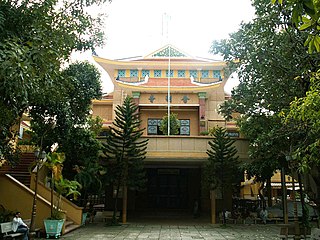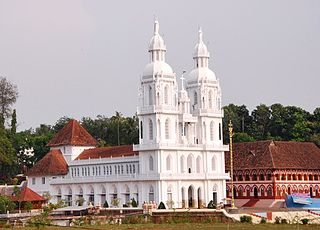The Mystery of Cloomber is a novel by the British author Sir Arthur Conan Doyle. It was first published in 1888 in the Pall Mall Gazette .
The Mystery of Cloomber is a novel by the British author Sir Arthur Conan Doyle. It was first published in 1888 in the Pall Mall Gazette .
The book is narrated by John Fothergill West, a Scot who has moved with his family from Edinburgh to Wigtownshire to care for the estate of his father's half brother, William Farintosh. Near their residence, Branksome, is Cloomber Hall, for many years untenanted. After a little while it is settled in by John Berthier Heatherstone, late of the Indian Army. General Heatherstone is nervous to the point of being paranoid. As the story unfolds, it becomes evident that his fears are connected with some people in India whom he has offended somehow. People hear a strange sound, like the tolling of a bell, in his presence, which seems to cause the general great discomfort. Every year his paranoia reaches its climax around the fifth of October, after which date his fears subside for a while. After some time there is a shipwreck in the bay and among the survivors are three Buddhist priests who had boarded the ship from Kurrachee.
When John Fothergill West tells the general (to whose daughter Gabriel he is engaged) about the priests, he resigns himself to his fate and refuses any help from West. One night the three Buddhist priests summon General Heatherstone and Colonel Rufus Smith (who had been together with the general in India and apparently was under the same threat that was faced by the general) out of Cloomber Hall. With their psychic powers, they have a complete hold over the two erstwhile soldiers. The priests take them through the marshes to the Hole of Cree, a bottomless pit in the centre of the marsh and either throw the soldiers in or order them to jump in. The General had given his son a parcel and instructed him to hand it over to West in case of his death or disappearance. When West opens the parcel he finds a letter and some old papers. In the letter the general tells West to read the papers, which are pages from a diary that the general had kept in his days in the army of the English East India Company. As West reads the papers he understands the mystery of Cloomber. When he was in the army forty years ago, during the First Afghan War, the general was fighting against the Afridis in the passes of the Hindu-Kush.
After defeating the Afridis in a battle, he chases them to a cul de sac to slaughter them. As the general was closing in on the remnants of the enemy forces, an old man emerges from a cave and stops him from killing them. The general, together with Rufus Smith, kills the old man and proceeds with the massacre. As it turns out, the old man was an arch-adept, who had reached the zenith of Buddhist priesthood. His chelas (students) vow to avenge his death. The three chelas let the general live on for forty years to prolong his misery. The sound that appeared to emanate from above the general's head was the tolling of the astral bell by the chelas to remind him that wherever he goes, he will never escape their wrath.

Ahmad Shāh Durrānī, also known as Ahmad Shāh Abdālī, was the founder of the Durrani Empire and is regarded as the founder of the modern Afghanistan. In July 1747, Ahmad Shah was appointed as King of the Afghans by a loya jirga in Kandahar, where he set up his capital. Primarily with the support of the Pashtun tribes, Ahmad Shah pushed east towards the Mughal and Maratha Empires of India, west towards the disintegrating Afsharid Empire of Iran, and north towards the Khanate of Bukhara of Turkestan. Within a few years, he extended his control from Khorasan in the west to North India in the east, and from the Amu Darya in the north to the Arabian Sea in the south.

For Whom the Bell Tolls is a novel by Ernest Hemingway published in 1940. It tells the story of Robert Jordan, a young American volunteer attached to a Republican guerrilla unit during the Spanish Civil War. As a dynamiter, he is assigned to blow up a bridge during an attack on the city of Segovia.

Lieutenant-General Sir Harry Burnett "Joe" Lumsden was a British military officer active in India.

Sahibzada Mohammad Shahid Khan Afridi, known as Shahid Afridi, is a former Pakistani cricketer and captain of the Pakistan national cricket team. An all-rounder, Afridi was a right-handed leg spinner and a right-handed batsman.
White Horse Temple is a Buddhist temple in Luoyang, Henan that, according to tradition, is the first Buddhist temple in China, having been first established in 68 AD under the patronage of Emperor Ming in the Eastern Han dynasty.

Brendan Rendall Bracken, 1st Viscount Bracken, PC was an Irish-born businessman, politician and a minister in the British Conservative cabinet. He is best remembered for supporting Winston Churchill during the Second World War. He was also the founder of the modern version of the Financial Times. He was Minister of Information from 1941 to 1945.

The Afrīdī are a Pashtun tribe present in Pakistan, with substantial numbers in Afghanistan. The Afridis are most dominant in Pakistan's Federally Administered Tribal Areas, inhabiting about 100p mi2 (8000 km2) of rough hilly area in the Zarlash eastern Spin Ghar range west of Peshawar, covering most of Khyber Agency, FR Peshawar and FR Kohat. Their territory includes the Khyber Pass and Maidan in Tirah. Afridi migrants are also found in India, mostly in the states of Uttar Pradesh, Bihar and Kupwara Jammu and Kashmir.

Loulan, also called Krorän or Kroraina, was an ancient kingdom based around an important oasis city along the Silk Road already known in the 2nd century BCE on the northeastern edge of the Lop Desert. The term Loulan is the Chinese transcription of the native name Krorän and is used to refer to the city near Lop Nur as well as the kingdom.

Ngawang Lobsang Thupten Gyatso Jigdral Chokley Namgyal, abbreviated to Thubten Gyatso was the 13th Dalai Lama of Tibet, enthroned during a turbulent era and the collapse of the Qing Empire. Referred to as "the Great Thirteenth", he is also known for redeclaring Tibet's national independence, and for his reform and modernization initiatives.

The Shwedagon Pagoda ; Mon: ကျာ်ဒဂုၚ်; officially named Shwedagon Zedi Daw and also known as the Great Dagon Pagoda and the Golden Pagoda is a gilded stupa located in Yangon, Myanmar.

Curuppumullage Jinarajadasa was a Sri Lankan Sinhalese author, occultist, freemason and theosophist. The fourth president of the Theosophical Society, Jinarajadasa was one of the world's foremost Theosophical authors, having published more than 50 books and more than 1600 articles in periodicals during his life. His interests and writings included religion, philosophy, literature, art, science and occult chemistry. He was also a rare linguist, who had the ability to work in many European languages.
Kalinga Magha or Gangaraja Kalinga Vijayabahu was an Indian ruler from the Kingdom of Kalinga who usurped the throne from Parakrama Pandyan II of Polonnaruwa, in 1215. His reign saw the massive migration of Sinhalese to the south and west of Sri Lanka, and into the mountainous interior, in a bid to escape his power. Magha was the last ruler to have his seat in the traditional northern seat of native power on the island, known as Rajarata; so comprehensive was his destruction of Sinhalese power in the north that all of the successor kingdoms to Rajarata existed primarily in the south of the island.
Roderick Alleyn is a fictional character who first appeared in 1934. He is the policeman hero of the 32 detective novels of Ngaio Marsh. Marsh and her gentleman detective belong firmly in the Golden Age of Detective Fiction, although the last Alleyn novel, Light Thickens, was published in 1982.

Kim is a 1950 adventure film made in Technicolor by Metro-Goldwyn-Mayer. It was directed by Victor Saville and produced by Leon Gordon from a screenplay by Helen Deutsch, Leon Gordon and Richard Schayer, based on the classic 1901 novel of the same name by Rudyard Kipling.
The First Mohmand campaign was a British military campaign against the Mohmands from 1897 to 1898.

The Xá Lợi Pagoda raids were a series of synchronized attacks on various Buddhist pagodas in the major cities of South Vietnam shortly after midnight on 21 August 1963. The raids were executed by the Army of the Republic of Vietnam Special Forces under Colonel Lê Quang Tung, and combat police, both of which took their orders directly from Ngô Đình Nhu, younger brother of the Roman Catholic President Ngô Đình Diệm. Xá Lợi Pagoda, the largest pagoda in the South Vietnamese capital, Saigon, was the most prominent of the raided temples. Over 1,400 Buddhists were arrested, and estimates of the death toll and missing ranged up to the hundreds. In response to the Huế Vesak shootings and a ban on the Buddhist flag in early May, South Vietnam's Buddhist majority rose in widespread civil disobedience and protest against the religious bias and discrimination of the Catholic-dominated Diệm government. Buddhist temples in major cities, most prominently the Xá Lợi pagoda, became focal points for protesters and assembly points for Buddhist monks from rural areas.

Kazakhs are a Turkic ethnic group and are among the 56 ethnic groups officially recognized by the People's Republic of China.

The Krulak–Mendenhall mission was a fact-finding expedition dispatched by the Kennedy administration to South Vietnam in early September 1963. The stated purpose of the expedition was to investigate the progress of the war by the South Vietnamese regime and its US military advisers against the Viet Cong insurgency. The mission was led by Victor Krulak and Joseph Mendenhall. Krulak was a major general in the United States Marine Corps, while Mendenhall was a senior Foreign Service Officer experienced in dealing with Vietnamese affairs.

A Supplement to the Journey to the West is a Chinese shenmo (fantastic) novel written around 1640 CE by Dong Yue. It acts as an addendum to the famous 16th century novel Journey to the West and takes place between the end of chapter sixty-one and the beginning of chapter sixty-two.

Major Archiepiscopal Marth Mariam Archdeacon Church, Kuravilangad is a Marian pilgrim center of the Syro-Malabar Church located at Kuravilangad in Kottayam district. This church claims to date to 105 AD. The church has an ancient bell with the engraving on Syriac language "Mother of God." Three majestic bells were brought from Germany in 1911 and is one of the largest bells in Asia. The church is also known for its Kappalottam or "racing ship," a commemoration of the biblical story of Jonah and the whale.